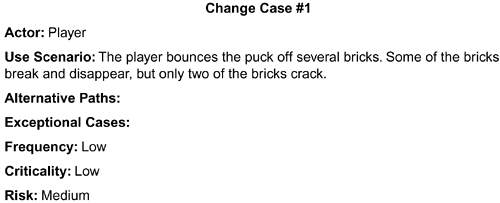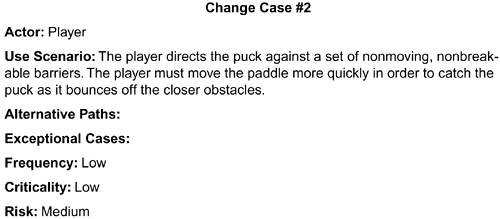Testing Models for Additional Qualities
| Increasingly, projects are chartered to achieve more aggressive objectives such as the development of extensible designs, the design of reusable frameworks, or highly portable systems. The products of the analysis and design phases of these projects are most critical for achieving these types of objectives. In particular, the architecture is key to the success. Guided inspection can be used to ask metalevel questions about the system. In this mode, the test scenarios are developer actions on the system and not user actions. Instead of asking how the objects in the system would interact, the question is, "How must the classes of the system be changed to provide the newly required behavior?" The changes to the design or the revisions needed to produce a framework from an existing application can be captured as change cases [EcDe96]. A change case is a use case that is not a requirement of the system, but it is an anticipated change to the system. Guided inspection applies correctness, completeness, and consistency criteria to the current analysis and design models with the change cases as the source of test scenarios. For example, if the project is to build a framework upon which future development will be based, it is not sufficient to test against the current uses for the system. Consider the change case shown in Figure 4.37. Test cases can give insight into the effort required to extend the framework by testing how complete the existing model is relative to the new requirements. The second change case, as shown in Figure 4.38, could be used to test the architecture. It would be used to determine how completely the existing architecture covers the new requirement. Figure 4.37. A change case for Brickles
Figure 4.38. A second change case
The technique for testing these objectives can be viewed as a series of steps. Each of the steps is described and accompanied by an example.
The output of this process is a set of potential changes needed to achieve the desired system quality, such as extensibility. The inspection searches for missing concepts and contradictions between what exists in the model currently and what would need to be added to the model in order to achieve the new objective. This technique can provide early feedback to the development team about fundamental weaknesses in the design. |
EAN: 2147483647
Pages: 126


